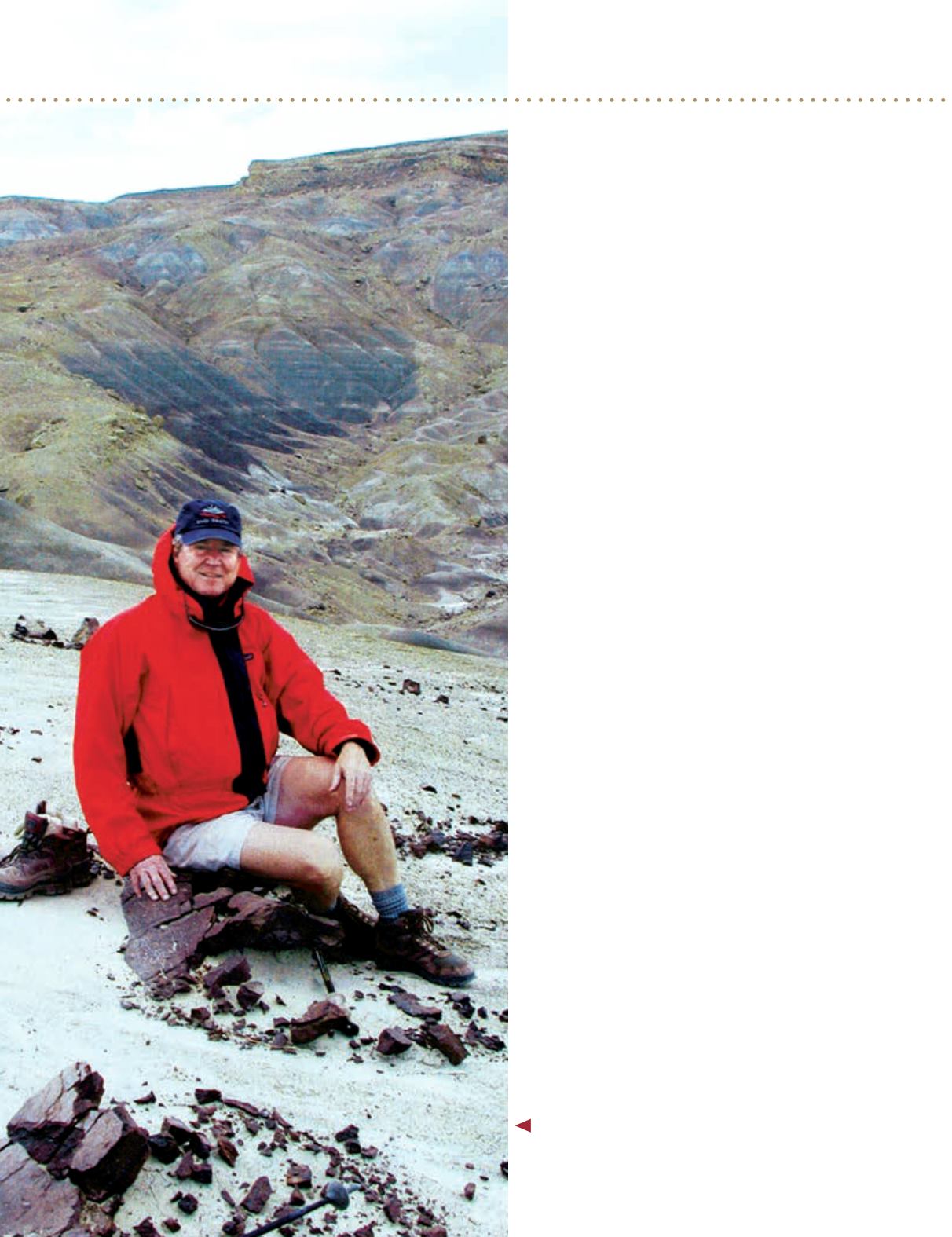
30
just looks down” and there they are on the eroded surface.
Most dinosaurs are found by amateurs and, later, when
professionals hear about the discoveries, they dig them
up and report the finds as science.
Despite January’s summer prominence in the southern
hemisphere, we have run into snowstorms during our
excursions. We’ve encountered the famous 70-mile-
per-hour winds of Patagonia, another natural obstacle
we have managed to overcome, inspired by the promise
of discovery. All day, the condors soar and follow us,
some only 100 feet above our heads, craning their necks
to better spy our movements. When they turn in the
wind, their beautiful white wings and elongated dark
finger feathers reflect the sun. We have seen imposing
puma tracks in the mud of draws. We have remained
vigilant for black widow spiders as we have scoured the
surface for bones, undeterred, but we only ever saw one
of the arachnids.
Remember that Charles Darwin’s progress was halted
on the Plains of Disappointment. Had Captain FitzRoy
taken more food, Darwin might have been able to enter
the badlands we entered a century and a half later. I have
little doubt Darwin would have had no trouble locating
the bones we have found. He would have recognized
them for what they were – incredible remnants of ani-
mals no longer in existence. Paleontologist Richard Owen
had not named these giant animals “dinosaurs” until 1842.
Charles Darwin might have given them a different name
and we might never have known these beasts by their
common designation. He could have sent bones back to
England that would have astonished the establishment.
Darwin could have been the father of all dinosauria – by
another name. Think of it.
From 1995 to 2004, I took three trips to the boneyard
on the east bank of the Rio La Leona, which creates the
valley between Lago Viedma and Lago Argentina. The
coursing glacial melt transforms the river into a meander-
ing chalky white that flows through Lago Argentina and
into the Santa Cruz, where Darwin stopped. The moon-
scape it creates consists of a predominantly gray clay-
like soil that crumbles and erodes very easily. The many
outwashes contain bones and fragments. Sometimes we
observe bones through binoculars on adjacent tongues
of the badlands, stretching for a mile or more and eroded
on both sides by runoff from dry streambeds.
Our first find was a sole femur bone. Chris Flagg and I
looked at each other, spellbound, knowing we had found
a relic more than 65 million years old, lying peacefully on
a rise overlooking the La Leona Valley. It was probably
closer to 80 million years old, judging from the formation
in which it lay. We wondered aloud how the bone got
Coley Burke at the site of a dinosaur boneyard in
Patagonia, where he has made several successful
fossil finds.


